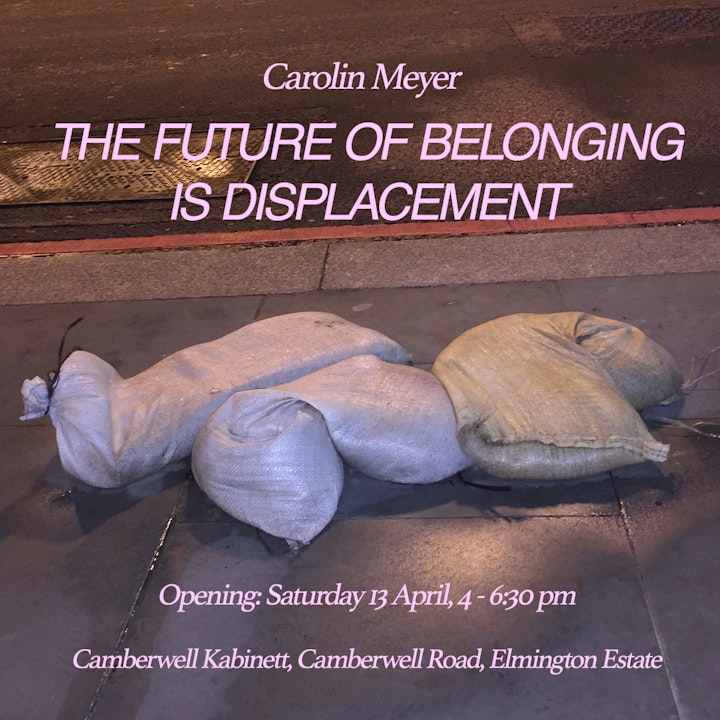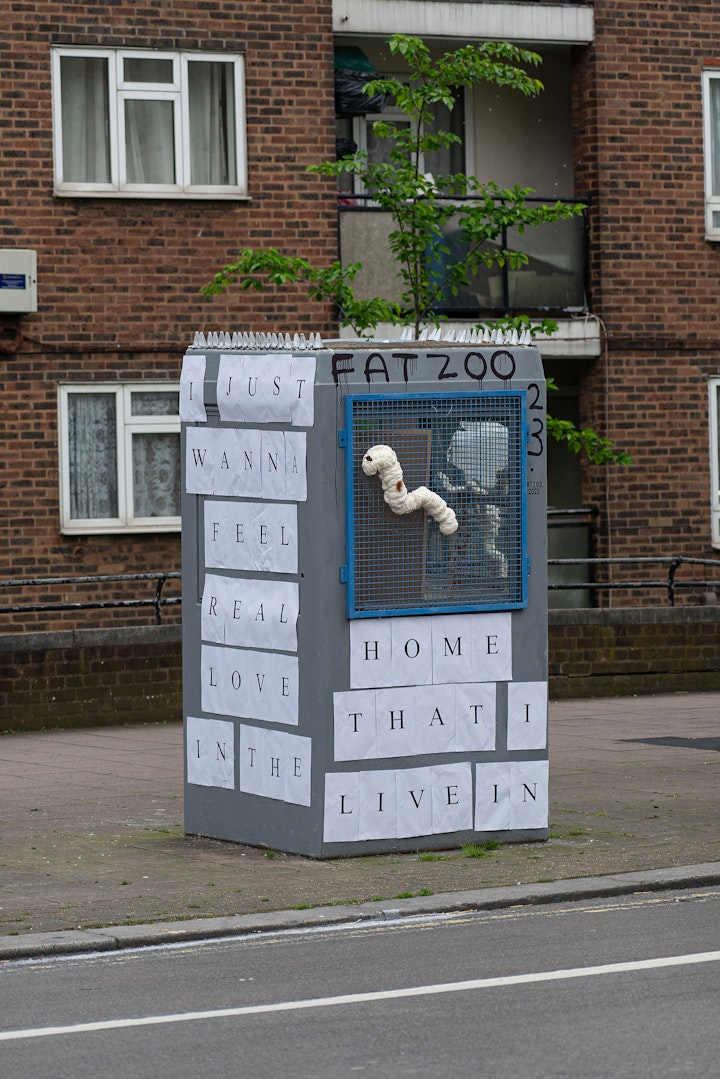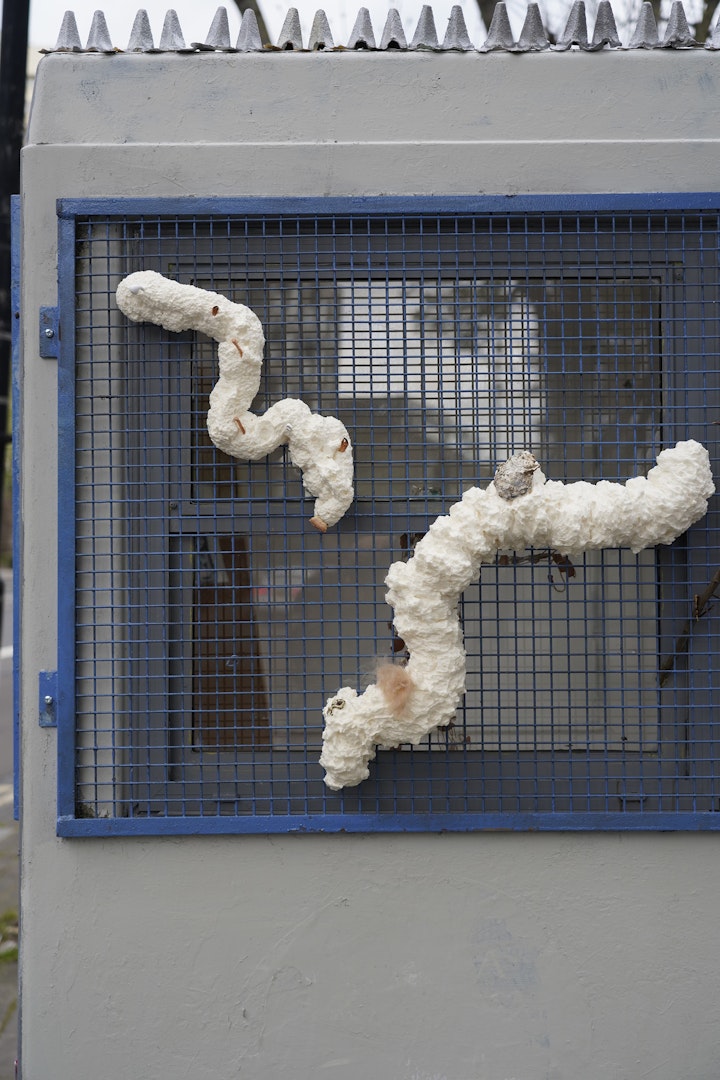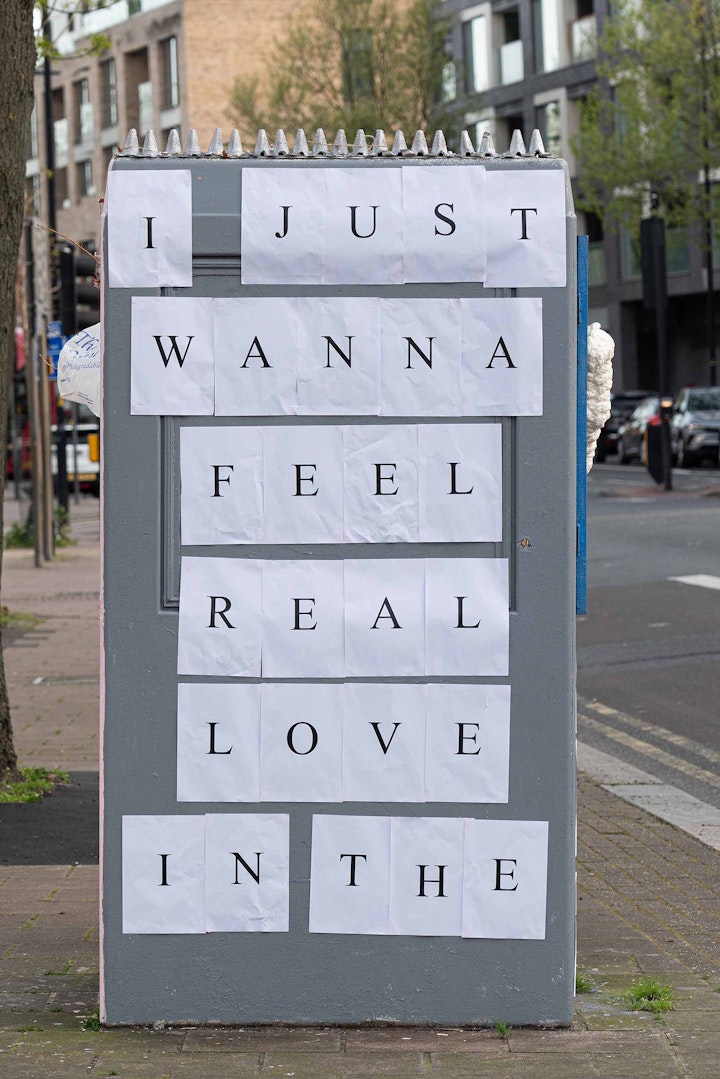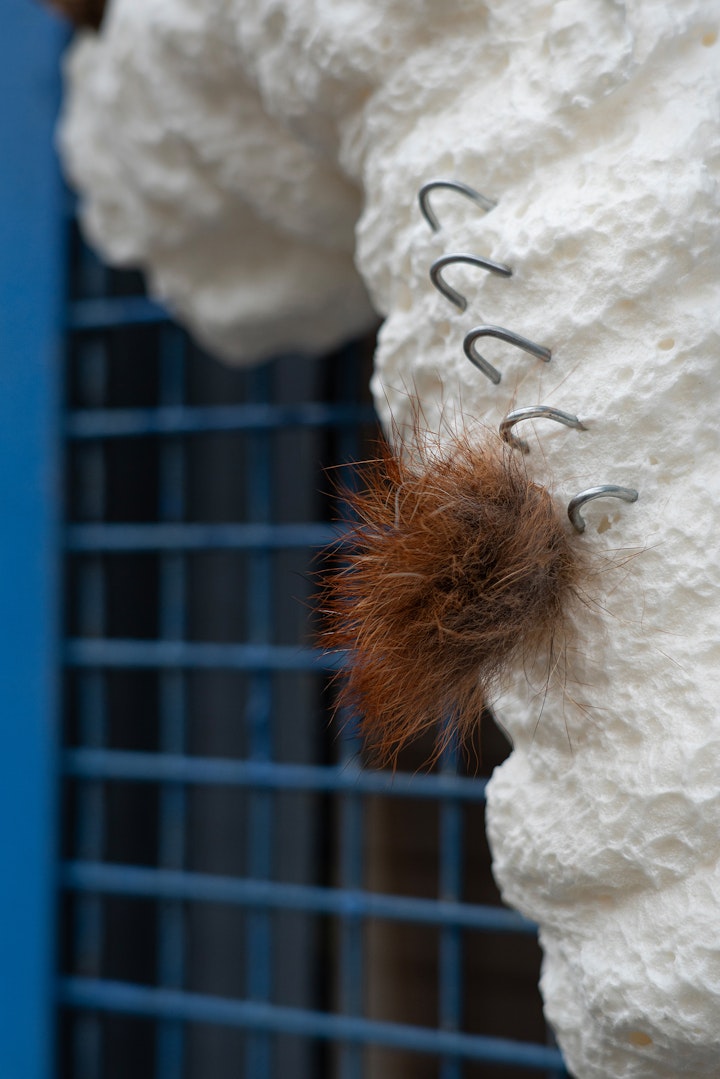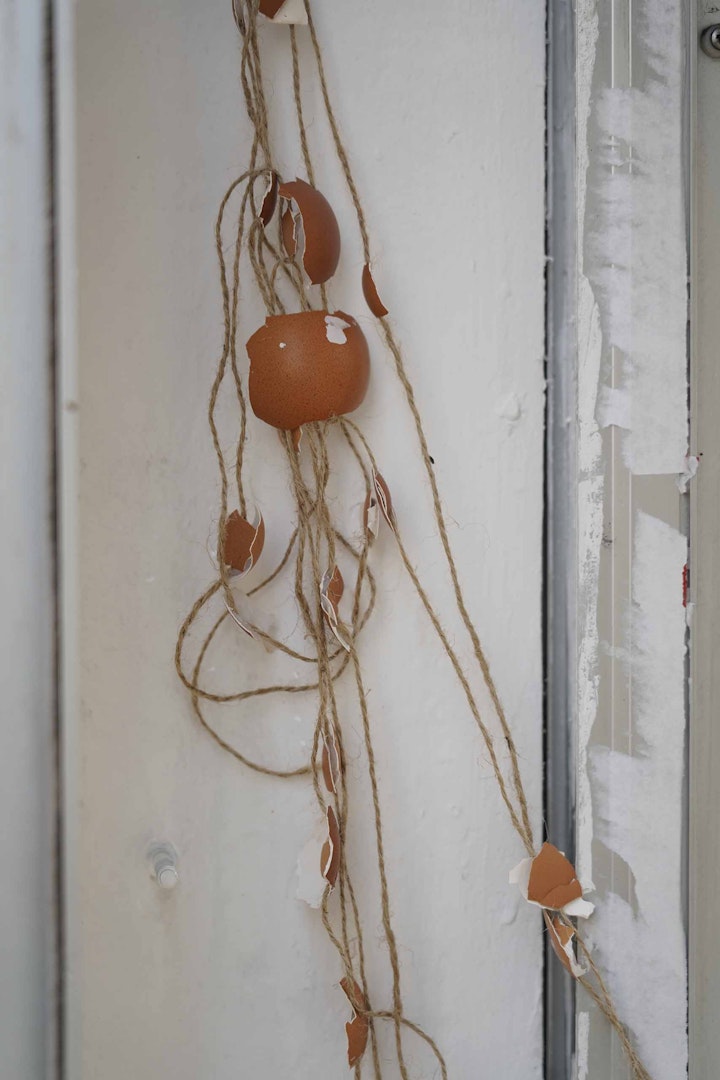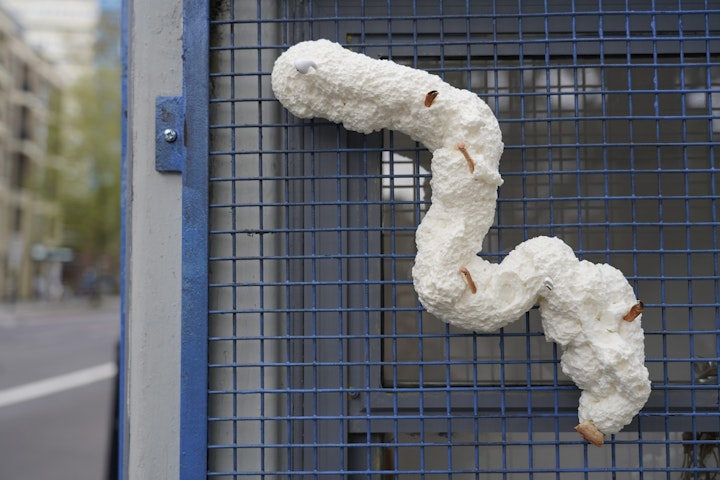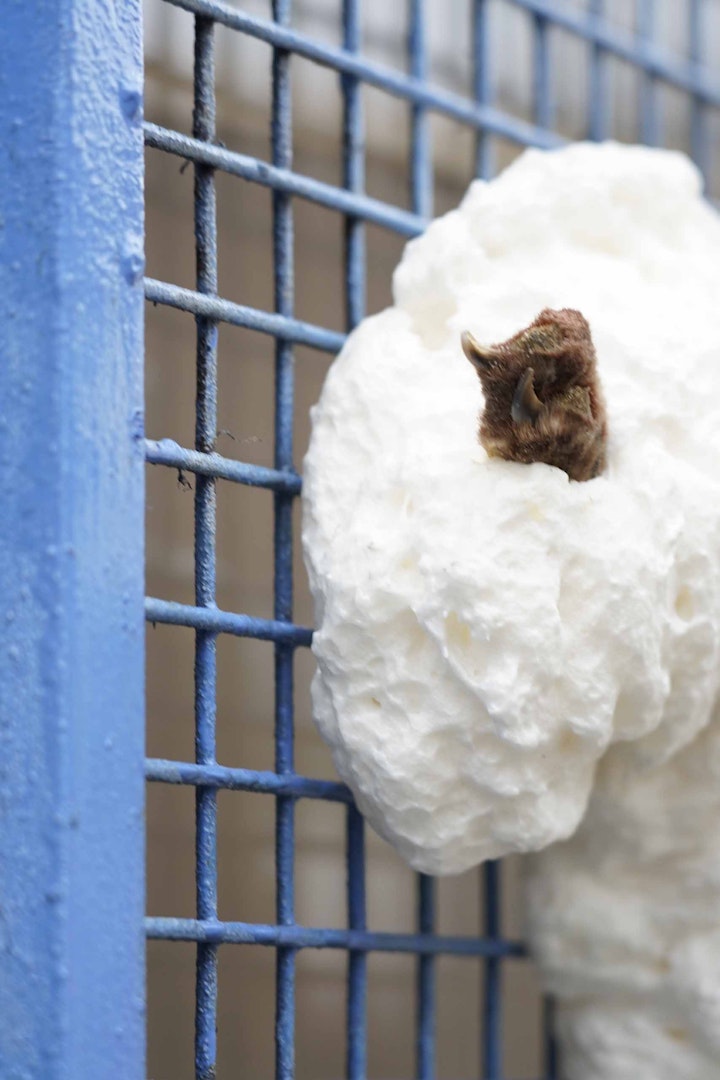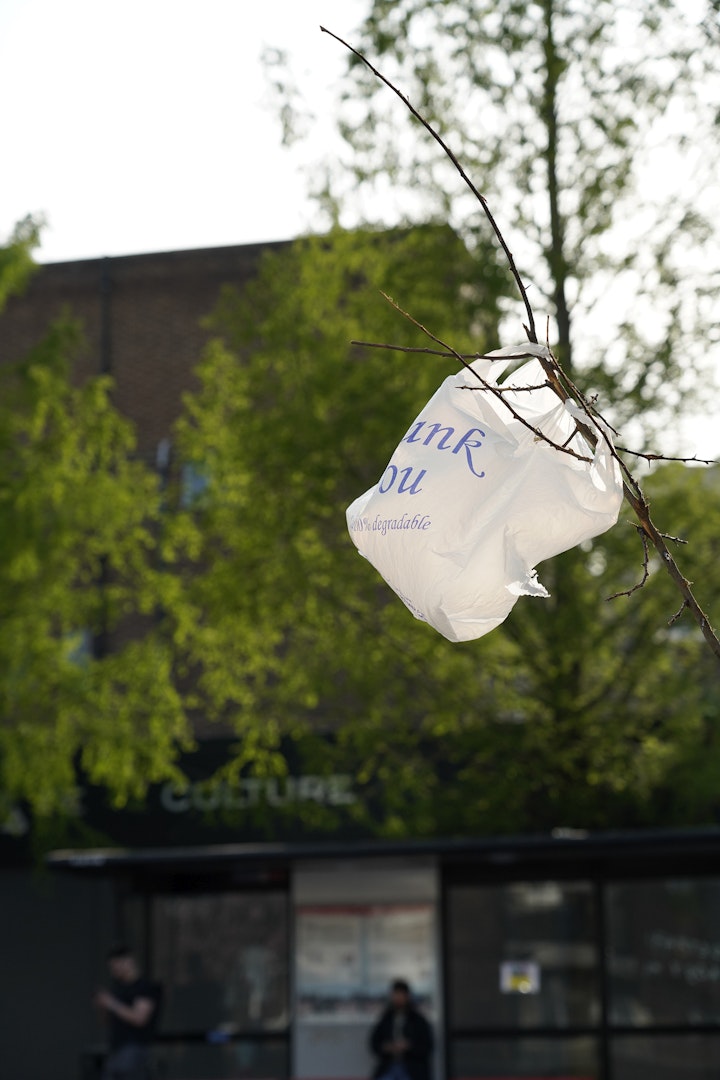-
![the future of belonging exhibition copy]()
Exhibition text by Carolin Meyer:
This exhibition engages with neglected and increasingly hostile urban spaces observed in London between 2018 and 2024, and explores how critically passing through space can help us understand and reimagine our ever-flattening environment, our shared histories, and each other. Following the tradition of land art and psychogeography, the objects assembled into surreal sculptures are directly made from found objects, the built environment, and the land - for minimal and temporary intervention.
As more and more homes and communal spaces have come under threat due to simultaneously mounting crises, this exhibition thinks through what the Indigenous feminist scholar Michelle Murphy calls 'alterlife', the enmeshment of altered land and body, as a starting point for a different approach to life. Human bodies do not end at the skin, as the feminist cyborg scholar Donna Haraway puts it. They expand into the environment, and the environment has long expanded into us. Neglected spaces impact on the people frequently passing through them as fabric of their homes, with methods of hostile architecture, such as bird or 'anti-homeless' deterrents actively preventing any dwellings on the pavement. Some urban public spaces are so neglected that they seem to have been rendered non-places; only meant to be passed through to get from one place to the other whilst the closing of local and communal spaces or their shift to the online world further cement feelings of estrangement.
In the exhibition, the home is evoked as a locus for uncanny disturbances and emotional repressions, for example by a tangled curtain made with eggshells. Other works materialise Murphy's prompt of the alterlife as "life already altered, which is also open to alteration" - Sculptures made from insulation foam with fox fur, crab legs, medical pills, headphones and other found and reclaimed curiosities worked into their surfaces, representing "life already altered" and the location of the public gallery capturing "life open to alteration". Dualisms of inside/outside, online/offline, prohibition and desire are blurred to the point of symbiosis. It is from there that we can insist that people and the land matter and that urban spaces are not just a sort of hinterland in which bodies become driftwood needing to be managed away.
The exhibition and the public gallery space itself take up the transmutation of an abandoned urban space into an ephemeral site of collective learning and gathering, where all passers-by are invited to feel something and can demand to feel love in the homes that they live in. Facing the nation's porous and uneasy existence head-on, the exhibition proposes that we use our shared vulnerability and insist on holding physical space, because the strong belief in what remains of communities against all odds is what prevails.
-
![resized I just wanna feel]()
-
![resized future of belo]()
-
![resiz]()
-
Painting, metal hooks, cut-out, cutlery parts.
-
![IMG_4762]()
-
Oyster shells, black acrylic paint, feathers.
-
Plaster, found objects, insulation/expanding foam, fake nail.
-
![resiii]()
Egg shells, string.
-
-
![_DSC0775]()
-
-
-
![_DSC0702]()
-
![_DSC0255]()
Exhibition documentation by Wenxuan Wang | Vinx Photography
The Future of Belonging is Displacement (2024)
Projects
An accompanied sound collage can be found on the Kabinett Gallery's website, as well as a shorter exhibition text written by artist, curator and founder of Kabinett Gallery, Camille Moreno. On the Kabinett Gallery's Instagram account is a video of the works together with a snippet of the sound collage.
The council have since removed the Camberwell Kabinett in a war on 'anti-social behaviour', which only reinforces and confirms the notion of displacement. The public and socially engaged endeavour of the Kabinett Galleries continues unperturbed in other abandoned and neglected parts of our built environment. Most recently in Crystal Palace, London, and Kreuzberg, Berlin.
